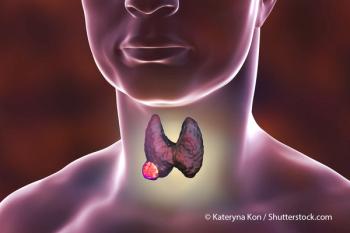
Remnant Tumor Ablation Should Be Selective, Not Routine
New ATA Guidelines offer clear and welcome guidance against routine post-thyroidectomy remnant tumor ablation with radioactive iodine, agreed experts at the 85th Annual Meeting of the ATA.
New
“I’m pleased that the new ATA Guidelines increase the momentum toward personalized treatment,” said Bryan McIver, MD, PhD, Program Leader, Head and Neck, and Endocrine Oncology at Moffitt Cancer Center in Tampa, Florida. “A selective, personalized approach best serves the patient.”
“If we’re going to use RAI, we should do so selectively,” he said. “Low-risk patients should be spared this treatment.”
The new ATA guidelines are very clear, Dr. McIver said: very low–risk patients should not receive RAI, high-risk patients should be administered RAI, and for intermediate-risk patients, RAI should be used selectively.
There is no benefit for RAI among very low–risk patients, but there is evidence of decreased recurrence and mortality rates among high-risk patients, such as those with gross extrathyroidal extension and incomplete tumor resection, Dr. McIver explained.
“The only challenge with implementing the new guidelines is that the intermediate-risk category represents such a broad swath of our patients,” Dr. McIver said. “We absolutely need randomized studies for the intermediate group.”
Postoperative re-staging can guide adjuvant therapy and follow-up, he noted. “Adaptive risk assessment allows transitions between risk groups,” he said.
RAI doesn’t just fail to benefit very low–risk patients, Dr. McIver emphasized-it might also increase the risk of harm, including salivary gland injury, nasolacrimal duct occlusion, oligomenorrhea, early menopause, male hypogonadism, and even increased risk of secondary primary malignancies. A mean I131 dose of 162 millicuries is associated with a statistically significantly increased risk of salivary gland, bone, soft-tissue, uterine and female genital, and colorectal carcinogenesis, he noted.
When a decision is made to treat low- or intermediate-risk patients with RAI, “be gentle and use the lowest possible dose,” Dr. McIver urged. “For remnant ablation, efficacy is just as good with 50 as with 100 millicuries.”
As early as the 1980s and 1990s, pioneers like Ernest Mazzaferri were cautioning that RAI should be used selectively, noted Rossella Elisei, MD, of the endocrine unit in the department of clinical and experimental medicine at the University of Pisa in Italy. But since then, remnant tumor ablation became routine. “Why did many of us start to use RAI for all of our patients,” she asked. Patient-and physician-anxiety about recurrence was part of the answer, she said.
But lab test precision has also improved in recent years, she noted.
“In the 1980s, the lowest concentration of thyroglobulin we could measure was 3.0 ng/mL; but sensitivity of thyroglobulin assays has improved, has become lower and lower and lower, and it is very rare these days to have undetectable levels of thyroglobulin,” she explained. "We have to accept that thyroglobulin is not always undetectable, and learn to wait a little bit.”
“Ultrasound can now detect lymph nodes smaller than 0.5 mm,” Dr. Elisei noted, readily detecting recurrences. That means RAI can be delayed, she said, noting that a median delay of 6 months does not change overall survival rates. “We can delay, and not have any effect on outcome,” she said.
“We can always step in later and administer RAI,” Dr. McIver agreed.
Despite emphasizing the importance of cautious and selective administration of remnant tumor ablation, Dr. McIver closed with a reminder of RAI’s continuing value for some patients.
“Don’t forget the other side of this,” he said. “High-risk patients do benefit from RAI therapy. Even intermediate-risk patients with papillary thyroid cancer may benefit from RAI; there’s a small but statistically significant difference in outcomes, so clearly, there is a subset of patients who do better with RAI.”
Newsletter
Stay up to date on recent advances in the multidisciplinary approach to cancer.

























































































